Torsa’s Human Exposure to Vibrations Monitor System has drastically reduced cervical injuries among vehicle operators at Compañía Minera Antamina (Peru). The system is considered a vital tool for optimizing the mine’s tracks and ensuring proper ergonomics during driving.
In general, vehicle operators in a mining operation are exposed to various occupational hazards that can harm health and ergonomics during driving: noise, dust, vibrations, diesel particles, etc. Among these occupational hazards, exposure to vibrations stands out as one of the most invasive and highest risk factors for the personnel responsible for driving the vehicles.
In 2017, due to the existing occupational risk up to that date, Antamina (Peru) expressed the technological need to analyze and monitor in real time the vibrations to which mining vehicle operators are exposed, in order to provide immediate alerts when safety levels established by the Occupational Health and Safety Department are exceeded.
Until that time, Antamina experienced a high rate of reports and medical leave due to cervical injuries and various events caused by vibrations that negatively impacted the ergonomics of operators while performing their duties.
After the excellent results and benefits previously experienced by Antamina thanks to Torsa’s custom development and implementation of their high-precision anti-collision system, the Occupational Health and Safety Department challenged Torsa’s engineering department with the development of a system to monitor, analyze, and reduce the occupational risk caused by human exposure to vibrations.
The objectives set by Torsa for this new technological development challenge were as follows:
- Ability to remotely monitor and analyze vibration data in real time
- Configurable network parameters for adaptation to any network deployment
- Robustness and protection level suitable for the mining environment
- Certification of the system to be developed according to ISO 8041 standards
- Integration of GPS technology for vibration data traceability
In less than a year, Torsa was able to develop an initial prototype tailored to Antamina’s needs, which was successfully tested in the field at the Yanacancha mining operation on several occasions. Finally, in 2018, the design of Torsa’s Human Exposure to Vibrations Monitor System was completed and installed across the entire fleet of vehicles at the beginning of 2019.
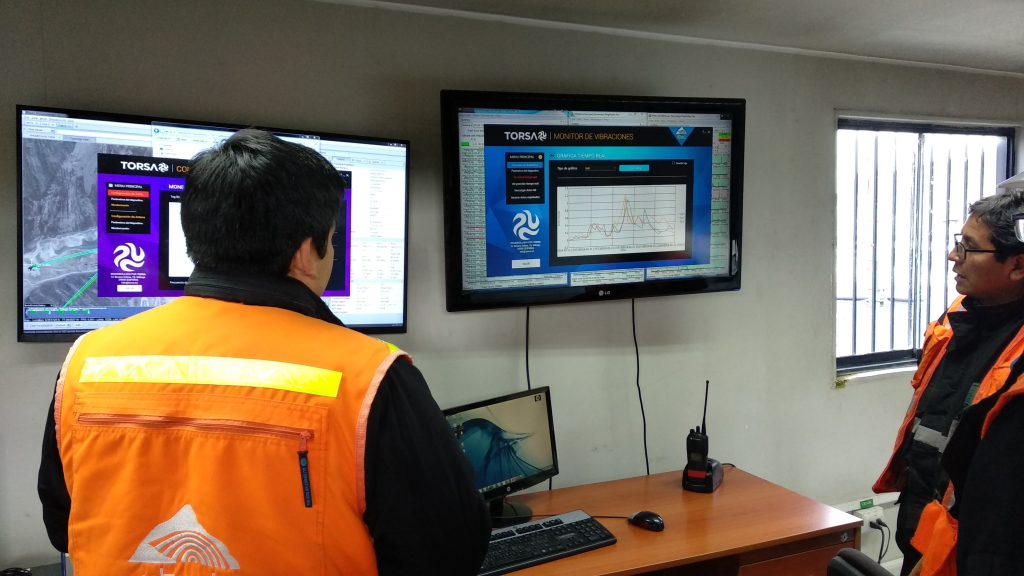
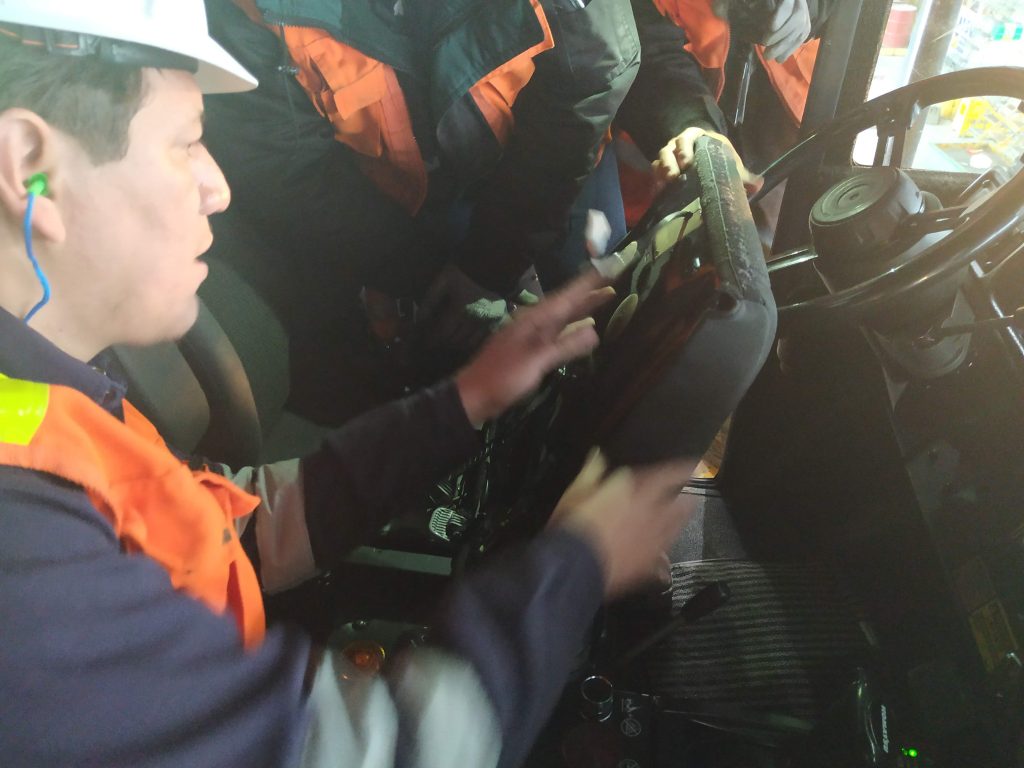
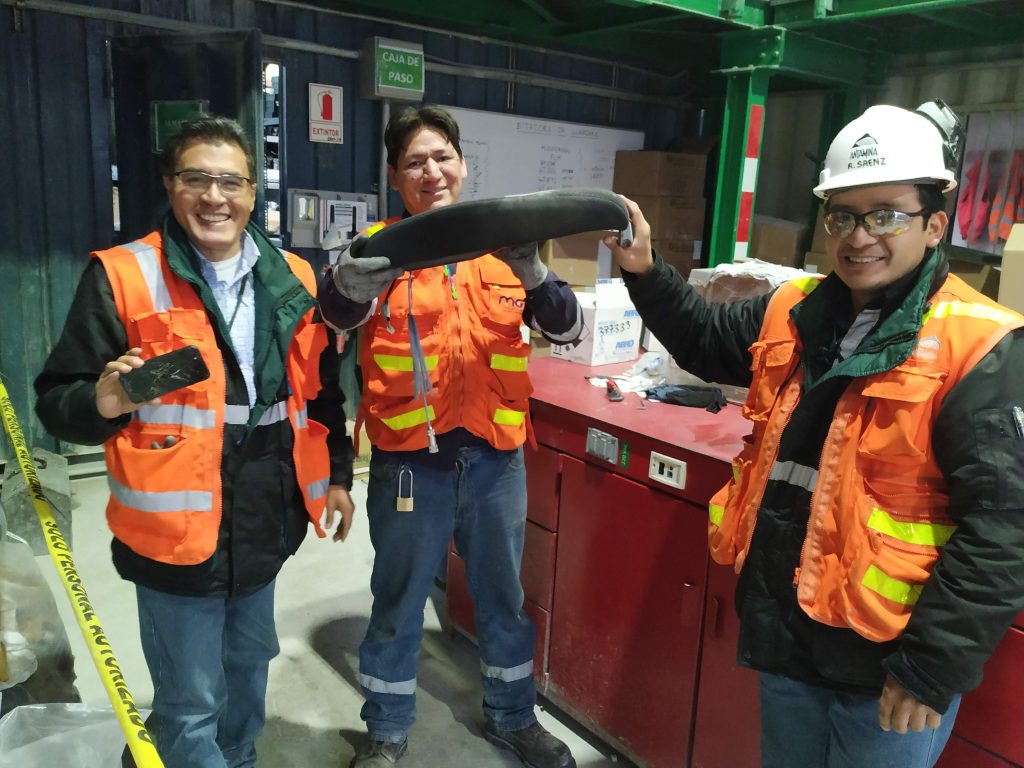
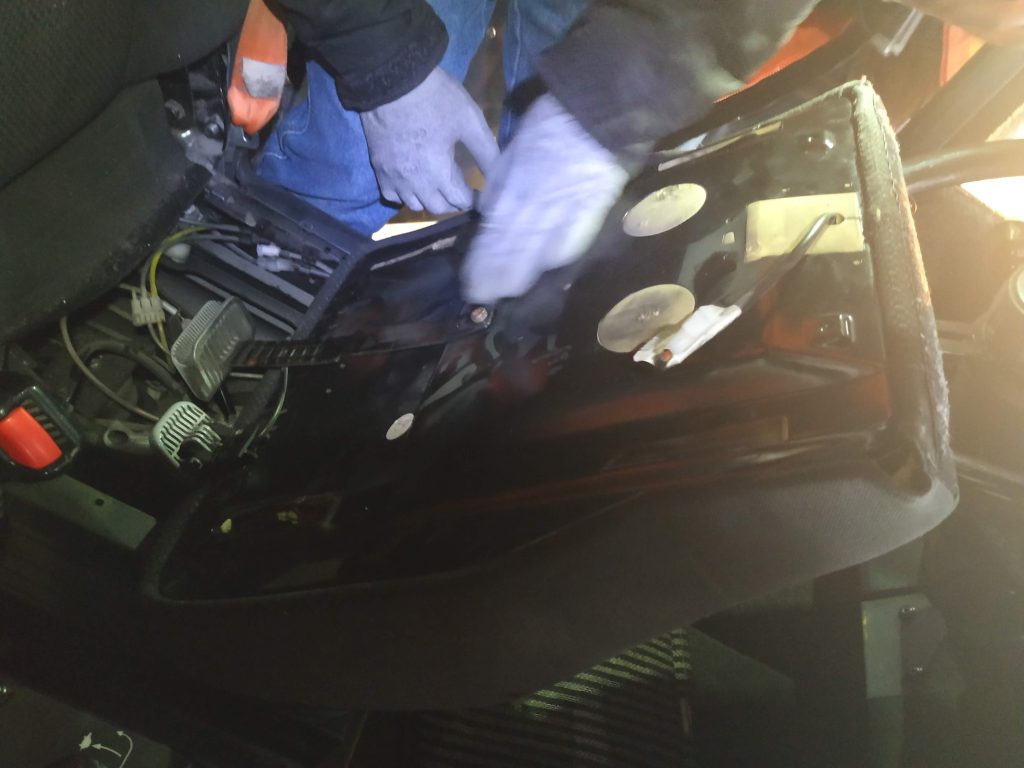
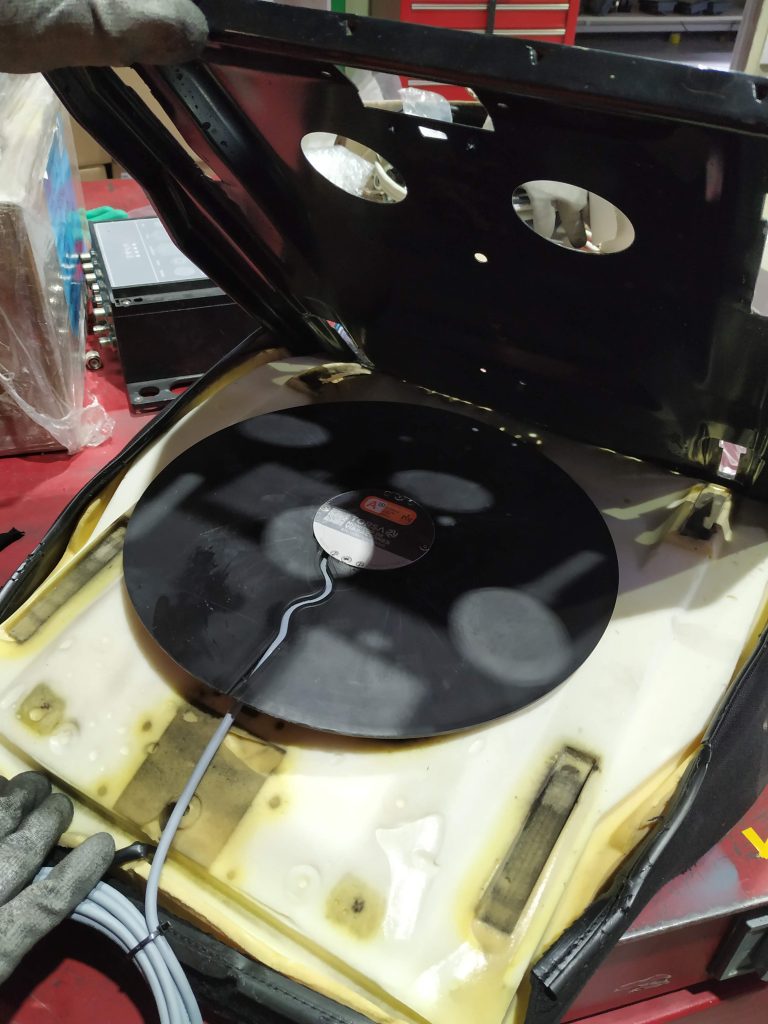
Conclusions
A new paradigm in whole-body vibration measurement
The way to analyze human exposure to whole-body vibrations was through periodic sampling. These samples were taken using measurement equipment that was not robust and designed for domestic environments, which were temporarily installed on vehicles for short periods of time.
After removing the equipment from the vehicles, the data had to be downloaded to a computer and analyzed by extrapolating the recorded data to the entire vehicle fleet. In deployments with a large number of vehicles, such as those in most mining operations, these samples and subsequent extrapolations are considered unreliable and unrepresentative due to the large number of variables that do not behave the same way in each vehicle during operation.
With the development of a system that allows for remote, real-time monitoring of human exposure to vibrations, a new paradigm in occupational health agent measurement is introduced. Torsa’s Human Exposure to Vibrations Monitor System provides a new measurement and analysis system with 100% reliability, offering real-time monitoring of vibration exposure without the need for extrapolation or unrepresentative estimations. Additionally, by equipping the system with robustness suitable for a demanding environment like that of a mining operation, the system ensures that the equipment can operate 24/7 without being exposed to deterioration from external agents (dust, rain, etc.).
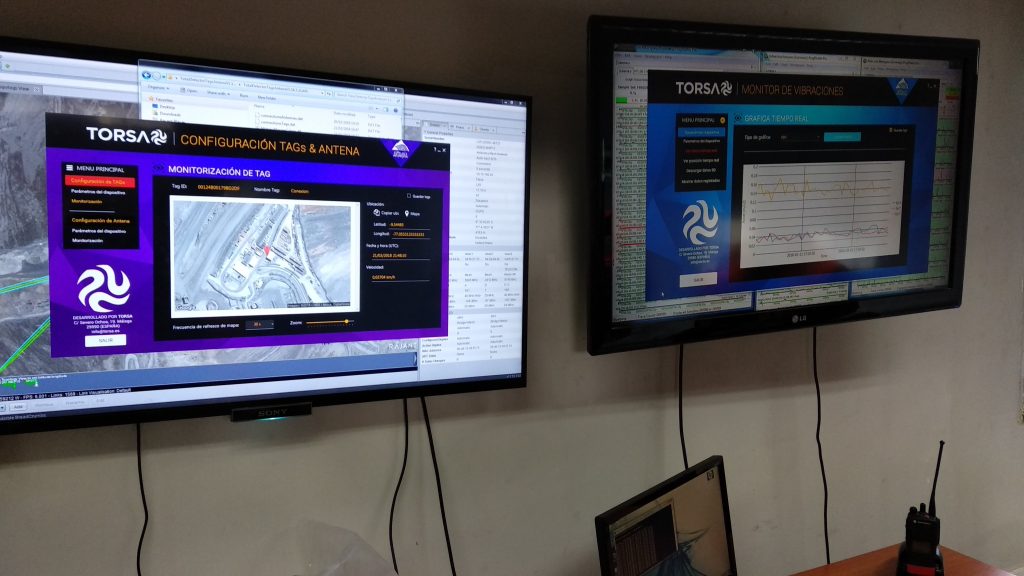
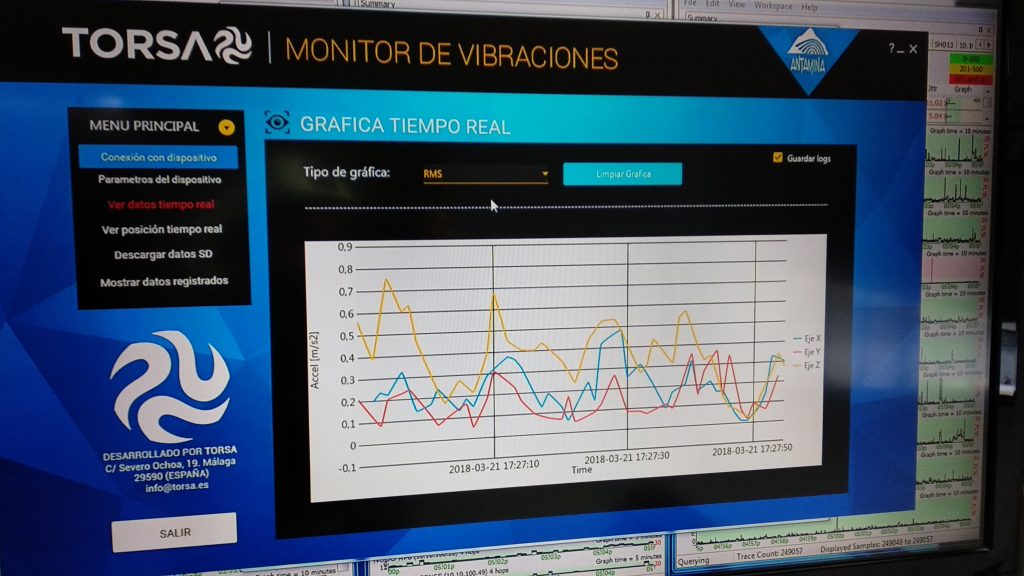
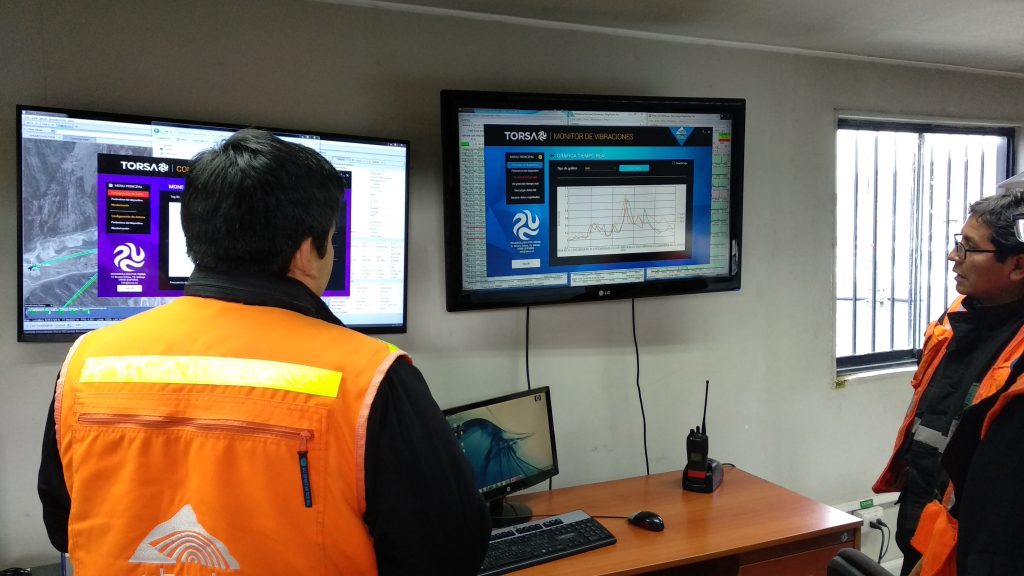
Certification, calibration, and data integrity
When designing and manufacturing a measurement system, the team of engineers at Torsa, experts in industrial metrology, developed the system according to the specifications and requirements of the international standards associated with human response to vibrations (ISO 8041) and the assessment of human exposure to whole-body vibrations (ISO 2631-1).
Once the design and manufacturing of the system were completed, each device was sent to an external laboratory accredited by ENAC, where it underwent calibration and subsequent certification of the system according to ISO 8041.
With this unique certificate for each unit manufactured by Torsa, Compañía Minera Antamina has legal and metrological support that guarantees the data recording and its integrity comply with the applicable international standards. Furthermore, this certification serves as support in the event of any audit or legal process that may arise.
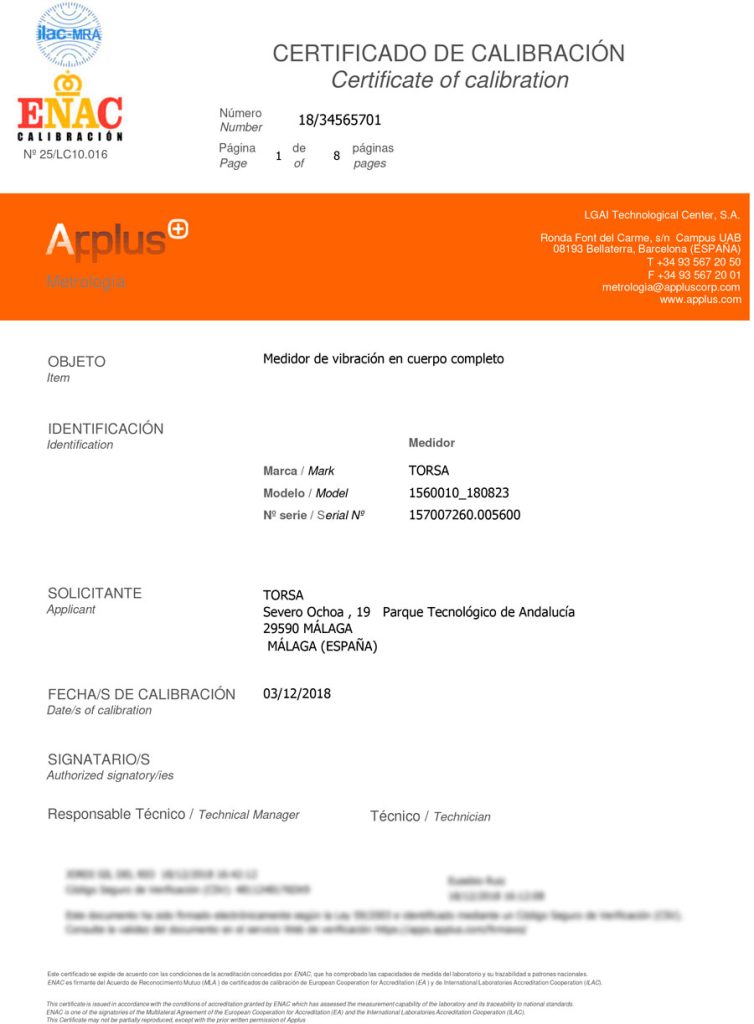
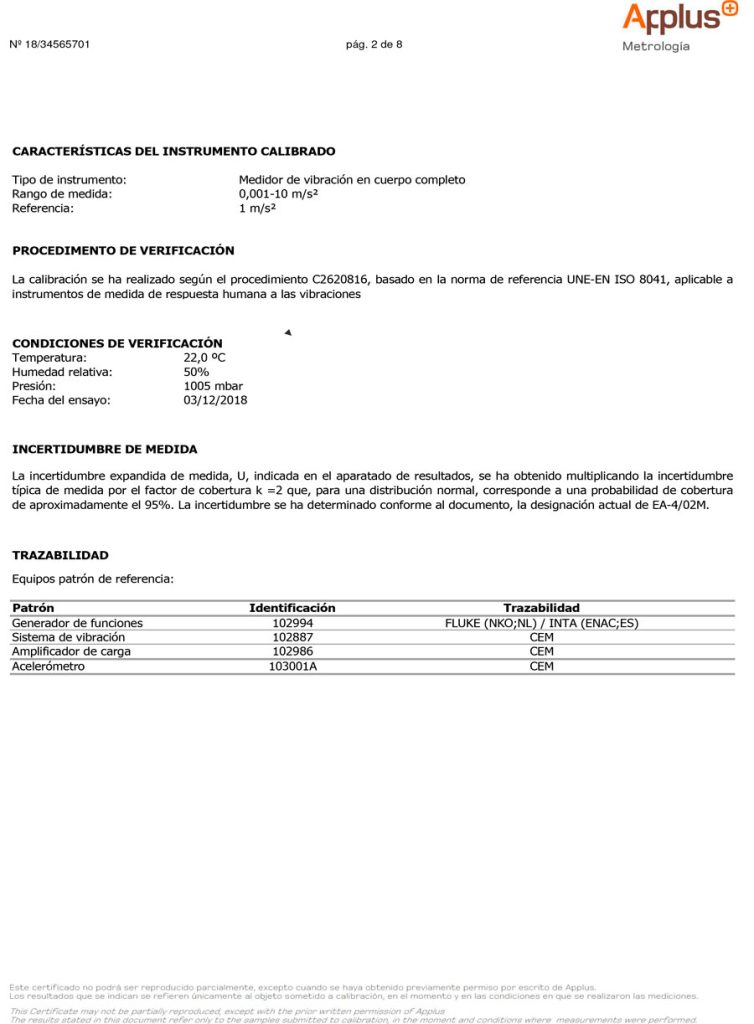
Communication interface and network adaptation to the mine’s Network
One of the main challenges Torsa faced during development was designing a system with a communication interface that could adapt to the “mesh” network at Antamina. On previous occasions, Antamina had tried to implement some measurement systems that were ultimately discarded because they could not customize network parameters. Each device needed to have an IP address and other parameters that could be customized by the IT department.
The system developed by Torsa allows full customization for any type of network, as it is equipped with Ethernet, WiFi, and even 3G/GPRS communication interfaces through an internal SIM card.
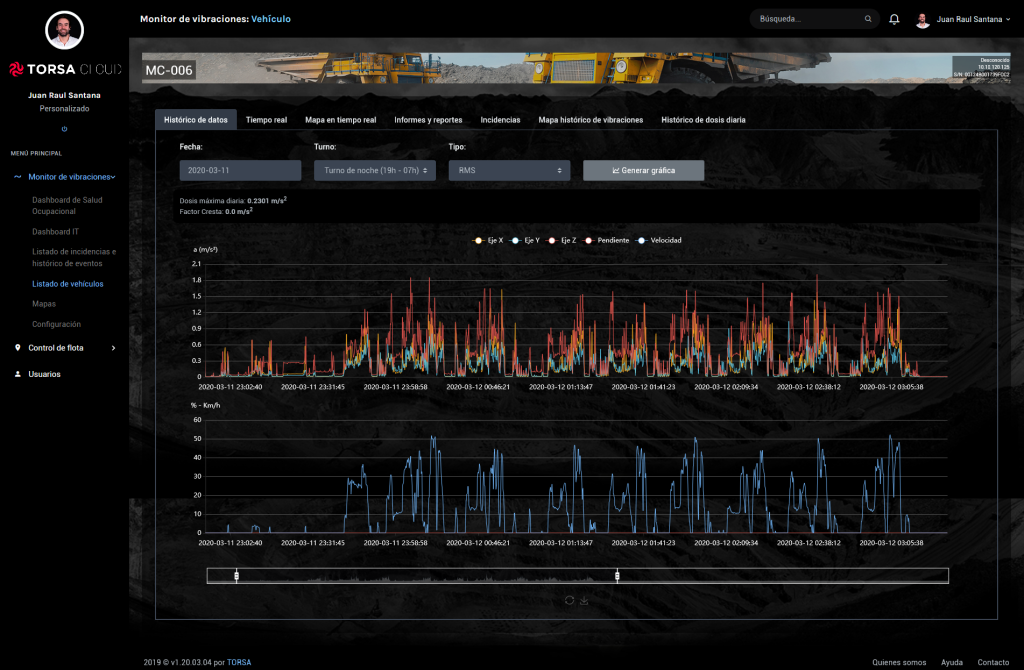
Combination with GPS data and heatmap generation
In addition to equipping the system with a fully adaptable network communication interface for any type of network, Torsa considered it necessary to include GPS technology in the device. By incorporating the vehicle’s GPS positioning and being able to plot positions and speeds along with the recorded vibration data, a new range of functionalities is opened up for various departments in the mine:
Generation of heatmaps: by linking GPS coordinates with vibrations, it becomes possible to identify areas of the tracks that are in the worst condition and generate vibrations that pose a risk to operators. With this tool, Antamina’s Track Maintenance Area can carry out preventive and corrective maintenance of the tracks based on their wear. In this way, in addition to serving as an occupational health tool, the Human Exposure to Vibrations Monitor System also serves as a tool for optimizing and maintaining the tracks, allowing maintenance to be carried out on the areas and tracks of the mine that truly need it. By optimizing the tracks, the wear on the vehicle tires is reduced, which in turn increases their lifespan. After the system was implemented at Antamina, it was observed that the costs associated with tire replacement were reduced due to the increased durability, resulting in significant annual savings.
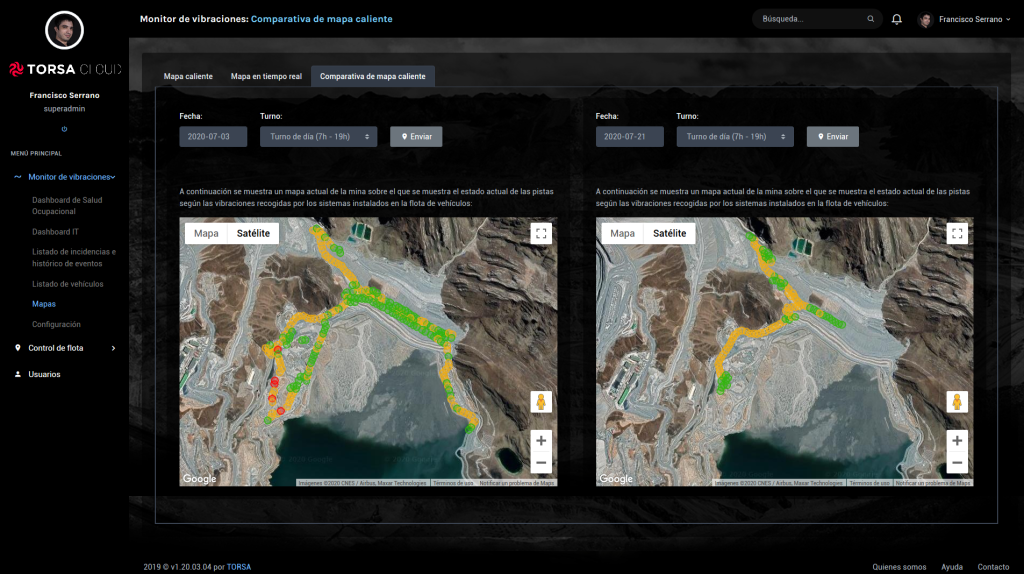
Load operations analysis: With the implementation of Torsa’s system, Antamina now has a tool that analyzes the loading operations between the shovels and trucks and identifies situations reported as “whiplash” when the load is deposited incorrectly onto the trucks. Furthermore, with this data, Antamina’s Mine Operations and Training Area can retrain operators who repeatedly cause risky situations during the loading process.
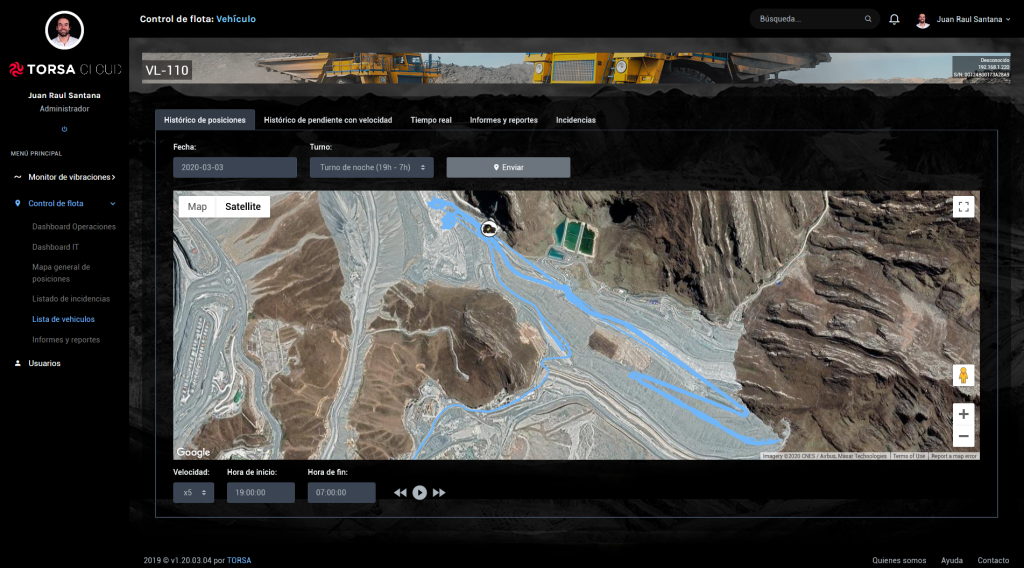
Hauling and transport operations analysis: by incorporating GPS technology and having all positioning, speed data, and complementing this information with an internal inclinometer, the system is able to identify incorrect operations occurring during the hauling and transportation of material. Once the system is operational, the mine can identify and reduce risk situations in hauling, such as when a loaded vehicle moves at a higher speed than allowed on a negative slope, considering this situation as one of the highest occupational risks to which operators are exposed.
Torsa’s Human Exposure to Vibrations Monitor System has proven to be a reliable and essential tool for Antamina to minimize occupational risk, optimize mine tracks, and improve the ergonomics and health of vehicle operators.
The system has drastically reduced the reporting of cervical injuries by operators, and consequently, the number of medical breaks for staff has significantly decreased.


